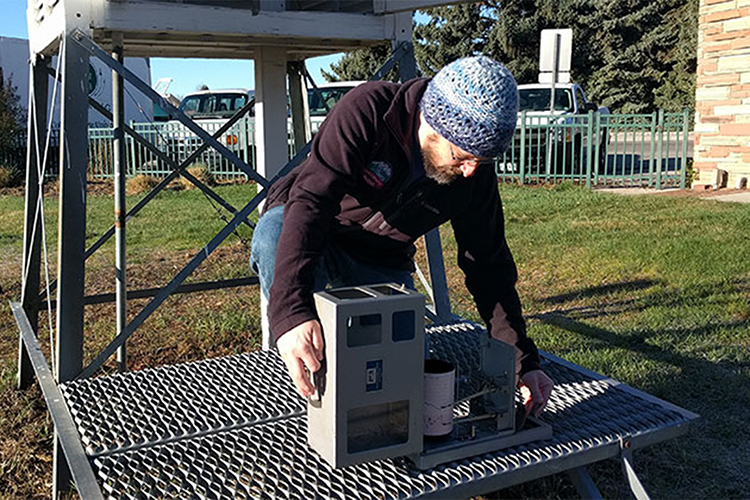Atmospheric science an important part of engineering college’s 150-year history
Three days a week, Noah Newman hops in his Toyota Prius and becomes part of Colorado State University engineering history.
The atmospheric science researcher drives to the weather station close to the Lory Student Center just before 7 a.m. to capture temperature, precipitation and wind speed readings, among other things, mostly with pen and paper.
Newman carries on a tradition of monitoring the Fort Collins weather that began with a local farmer in 1872 and quickly became associated with the first engineering faculty at Colorado Agricultural College. The Morrill Act that created land-grant colleges specified that both “agricultural and mechanic arts” be taught. What is now known as the Walter Scott, Jr. College of Engineering carries on that mission in the 21st century, its legacy expanding from weather and agricultural innovations into groundbreaking research on satellites, robotics and lasers, and machines that can learn on their own.
The college has graduated more than 20,000 students since the 1880s and now boasts annual research expenditures of $80 million and seven departments – Atmospheric Science, Chemical and Biological Engineering, Civil and Environmental Engineering, Electrical and Computer Engineering, Mechanical Engineering, the multidisciplinary School of Biomedical Engineering, and Systems Engineering. In 2016, civil engineering alumnus Walter Scott, Jr. raised the college’s profile with a transformational $53 million gift for scholarships, buildings, programs and faculty.
A lot has changed in 150 years. The land-grant mission of teaching, research and outreach – as well as monitoring the weather – remains the same.
Read the full article, “Putting the M in Colorado A&M.”
Photo at top: Colorado Climate Center research coordinator Noah Newman reads a hygro-thermograph, which records temperature and humidity, during a morning shift at the campus weather station.



